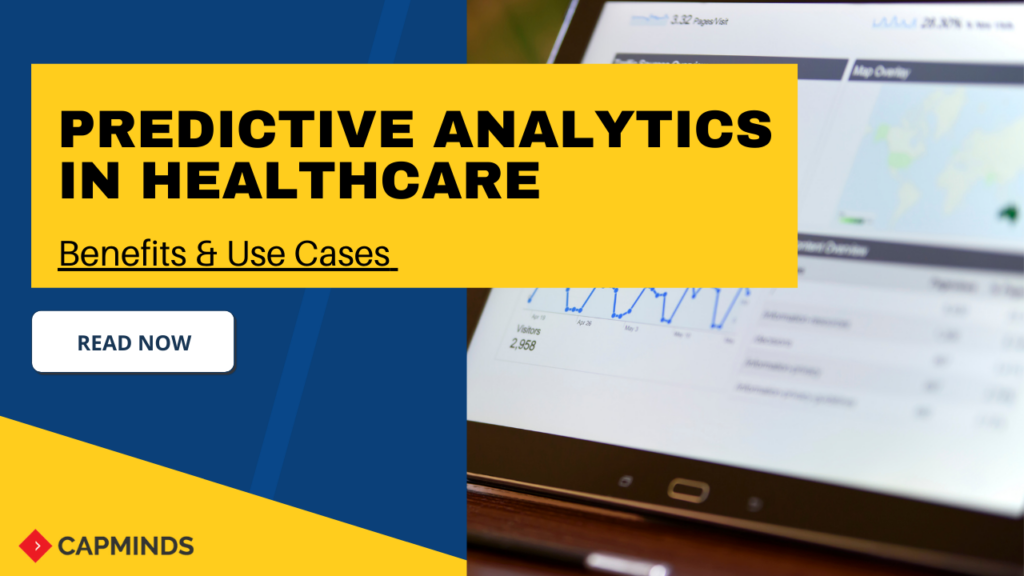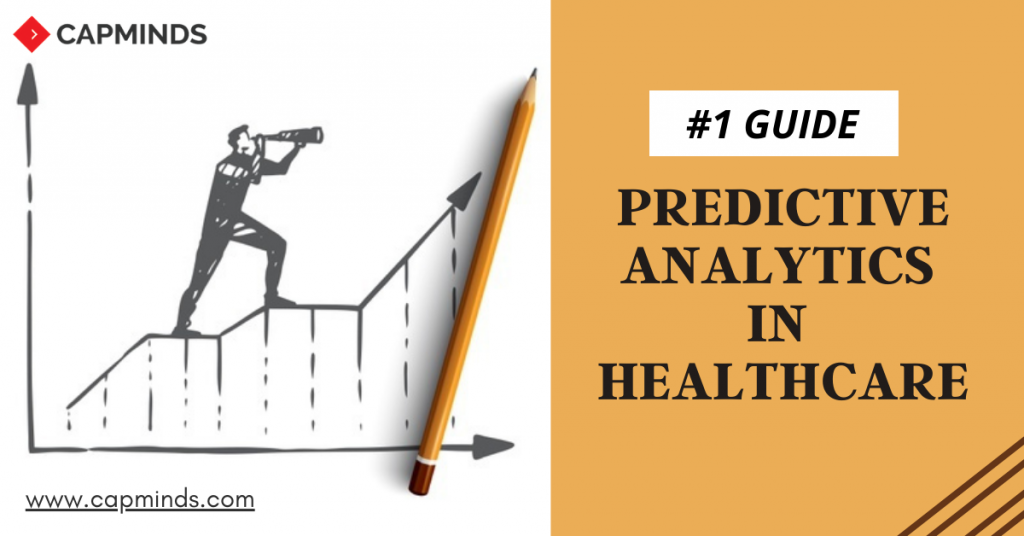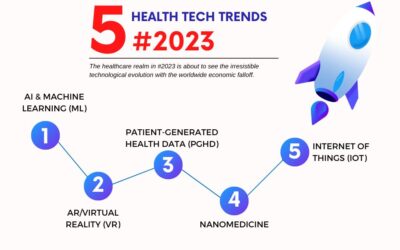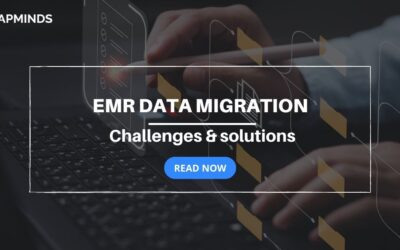Predictive Analytics In Healthcare: Benefits & Use Cases
The Covid-19 pandemic has pushed the healthcare industry to meet the new patient needs – who preferred to receive care remotely from their comfort location. This created a huge physical distance between the healthcare providers and the patients.
So, predicting what care is actually needed for patients and how it can be proactively provided on time is very much important today. Here comes in – the predictive analytics in healthcare. Through the implementation of AI in healthcare, predictive analytics has served as an important component of providing advanced care.
Let’s dive into how predictive analytics is used in the healthcare industry today
What is predictive analytics in healthcare?
Predictive analytics is defined as one of the fields of advanced analytics used to make easy predictions about future healthcare events. It allows healthcare experts to quickly analyze historical data, predict and plan a set of treatments that will work best for patients, saving resources, time and producing better health outcomes.
In the healthcare field, the predictive analytics process can be applied in population health management, clinical applications, financial management, operational management, and more.
How predictive analytics is helping the healthcare industry today?
Patients: Patients can benefit from healthcare predictive analytics in terms of improved and advanced quality healthcare access promptly.
Healthcare providers: The healthcare providers can benefit from predictive analytics in terms of optimized treatment protocols and providing innovative care delivery for patients.
Payers: The key benefits of predictive analytics in healthcare include payment fraud detection and prevention, formulating an effective risk management program, and more.
Research Team: The predictive modeling approach help in the research process for effective medication discovery and development of new treatments.
Healthcare Authorities: The implementation of predictive modeling offers various advantages to healthcare authorities, independent healthcare organizations, and regulatory bodies. They make use of predictive analytics for the following purposes:
- Managing finance and resources
- Optimization of treatment protocols
- Population health management
Predictive Analytics: Use Cases
Hospital Readmissions
Predictive analytics in healthcare can be used in identifying the high-risk patients of hospital readmission. Analyzing which patients may be readmitted allows healthcare providers to adjust their post-hospitalization treatment plans effectively. In this way, reducing hospital readmissions save money, saves healthcare resources for new patients, and improves overall patient outcomes.
Resource Allocation
Healthcare predictive analytics can easily identify the patterns in resource allocations and predict future needs. This enables the administrators to acquire the right resources to the right place at the right time.
Understanding the patient utilization process, resources and the overall capability of the healthcare organizations are possible today with predictive analytics. This helps healthcare organizations to manage their operations in a better way.
Population Health Management
The use of predictive analytics in population health management identifies patients who are at the highest risk of poor health outcomes. Especially when the EHR data is provided for a larger population, the healthcare professional and data analysts can easily determine important macro-health initiatives with risk scoring across that population.
Payment Automation and Coordination
Payer and insurance relations have traditionally involved significant amounts of manual data entry and user error when determining cost and billing distribution. Predictive tools are now used to predict Medicare, Medicaid, insurance, and private pay costs in advance, resulting in more proactive and accurate payment cycles.
Supply Chain Management
Especially during global supply chain shortages, it’s important to know how frequently you go through your most important medical supplies so you can resupply accordingly. Several predictive platforms now make it possible to predict PPE and other equipment needs based on specific environmental and patient conditions.
Precision Medicine and Personalized Care
Researchers across the globe have devoted their careers to conducting genomic research and developing a personalized treatment for genetic disorders.
With the help of healthcare data, predicting the disease’ course related to genetic markup has become quite a possibility. Predictive analytics has also been instrumental in fighting chronic diseases such as diabetes, cancer, and conditions such as food poisoning using genetic research data.
Benefits of predictive analytics in healthcare
The use cases mentioned above states success implementation of predictive analytics models in healthcare. But, what are the benefits that these models provide to the healthcare industry? Let’s dive deep into the benefits.
1. Chronic Disease Management and Preventive Care
Predictive analytics tools such as remote patient monitoring and machine learning can support hospitals in decision making by risk scoring and thresholds alerts. The information is then fed to tailored communication with the help of the cloud to remind the patients to refill their prescriptions or need any medical assistance.
Moreover, a notification in text, email, or a call can be triggered to check with patients managing long-term health issues. These are the types of seamless patient experiences that encourage better adherence to care pathways and ultimately influence better health outcomes.
2. Patient Scheduling and Pattern Analysis
Technologies such as artificial intelligence can help predictive analytics models predict the highs and lows of a care provider’s facility. This results in effective scheduling of the patients and avoids deadlocks in the facility.
Analyzing seasonality, typical patterns of the incoming patients, and capability of the care center, predictive analytics can assist hospitals in booking appointments on any given day, allowing having a buffer time to attend to the emergency visits.
3. Patients At-Risk Identification
Predictive analytics models can allow hospitals to identify certain risk factors in the patients. For instance, the model can recognize a diabetes patient who needs hospitalization based on age, prolonged coexisting chronic disease, medication adherence, and previous treatments.
Prediction on the likelihood of chronic disease can trigger the early intervention of care providers avoiding patients’ emergency room visits. Predictive analytics also help the care providers to provide personalized care by reaching the patients instead of waiting for them to visit the hospitals.
4. Reduced Patient Leakage by Optimizing Operations
In case of canceled appointments, latecomers, and no-shows, the hospital management has to undergo the daunting task of rescheduling the patients. Predictive analytics tools can help hospitals understand the patterns by analyzing data collected via the location of the patients or the nature of appointments.
This, as a result, allows the hospitals to preplan the operations to have enough buffers to cater to the emergency or appoint a specialist for a particular treatment resulting in reduced patient leakage.
Final Thoughts
Predictive analytics in healthcare offers great opportunities in improving patient care. Soon, the healthcare experts who invest in healthcare predictive analytics tools and technologies will be able to deliver better care and increase practice productivity.
At CapMinds, we successfully implement cloud-based EHR, telehealth, and other advanced health IT solutions like population health management to improve overall practice workflow.





